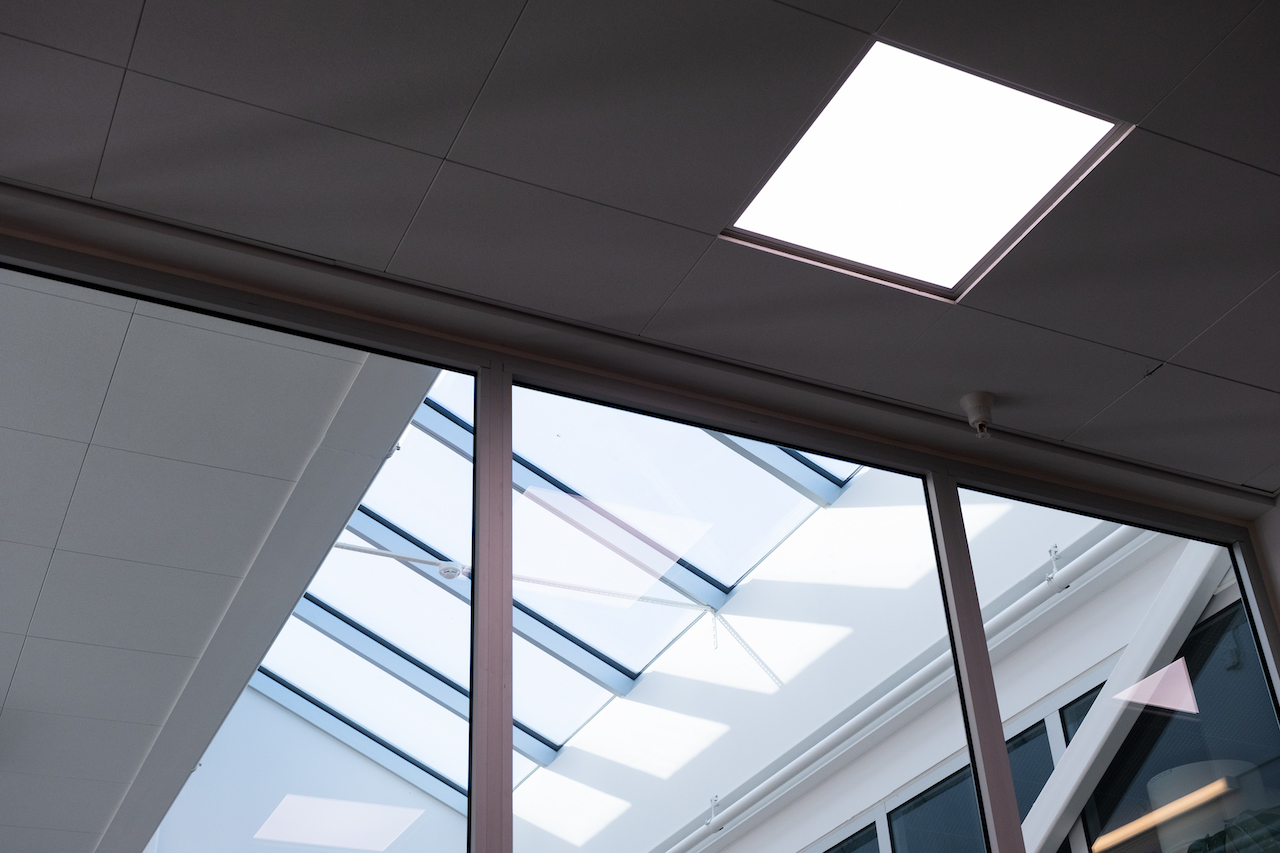In 2023, a substantial consortium of light researchers has come together to shed light on the health effects of circadian lighting and define measurements and thresholds to be applied. In addition, the recently published draft of the new global ISO standard for indoor lighting in work places, known as 8995-1, includes recommendations for circadian stimulation (m-EDI) during daytime, evening and nighttime. This places a spotlight on people’s health and well-being, raising the bar for indoor lighting, and it’s set to make waves in the entire lighting industry.
The standard spells out different lights for different times
To thrive, we need indoor lighting to adjust its brightness and spectrum (color composition) based on the time of day. Put simply, we need brighter lighting with a dose of blue (akin to natural daylight) during the daytime. In the evening, we require softer lighting with minimal blue content. The new ISO standard specifies clear recommendations for m-EDI values for these conditions (see the fact boxes below).
Setting a higher bar than the new guidelines
BrainLit has been offering Biocentric lighting since 2012, providing minimum 250 lux m-EDI where it is needed. Biocentric lighting is modeled, specified and validated in circadian measurement values. It has proven health impact. Biocentric light is controlled by light recipes that ensure the right type of light at the right time of day, both in terms of intensity and spectrum. This means that Biocentric lighting not only meets, but exceeds the upcoming ISO standard recommendations.
ISO 8995-1 Draft Recommendations for day, evening, and night
ISO 8995-1 specifies lighting requirements for humans in indoor workplaces. The recently published draft standard includes recommendations for circadian stimulation (m-EDI) in daytime, evening and night illumination.
Daytime:
Minimum 250 lux m-EDI. This can be achieved with blue-rich light, similar to daylight.
Evening:
Maximum 10 lux m-EDI 3 hours before bedtime. For example dimmed, candle-like warm light with little blue content.
Nighttime:
Ideally no light, max 1 lux m-EDI as we sleep. In case activities during the night require vision, max 10 lux m-EDI.
The quantity m-EDI
To measure the impact of light on the body’s internal biological clock, the standard uses m-EDI (Melanopic Equivalent Daylight Illuminance). m-EDI is a measure of the light stimulating our circadian rhythm. Bright days and dark nights are needed for a stable, healthy circadian rhythm.


